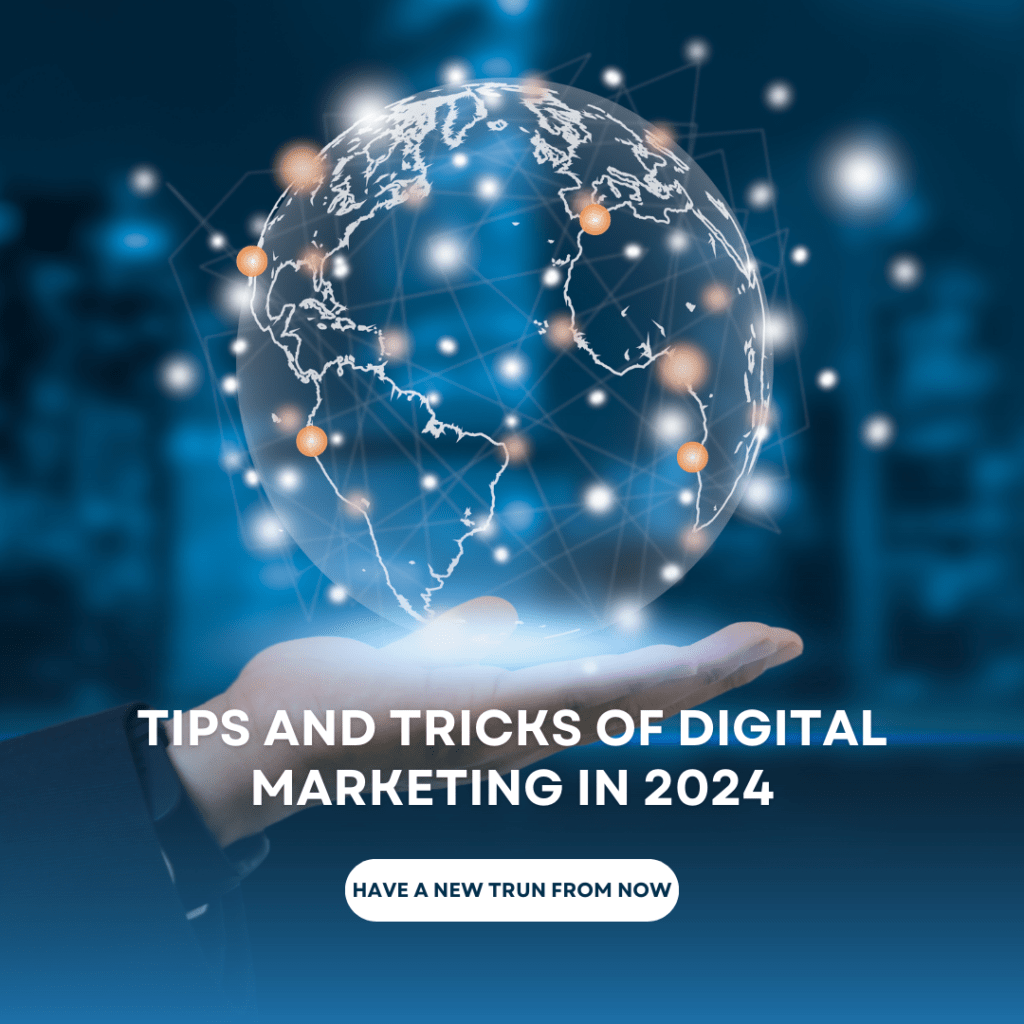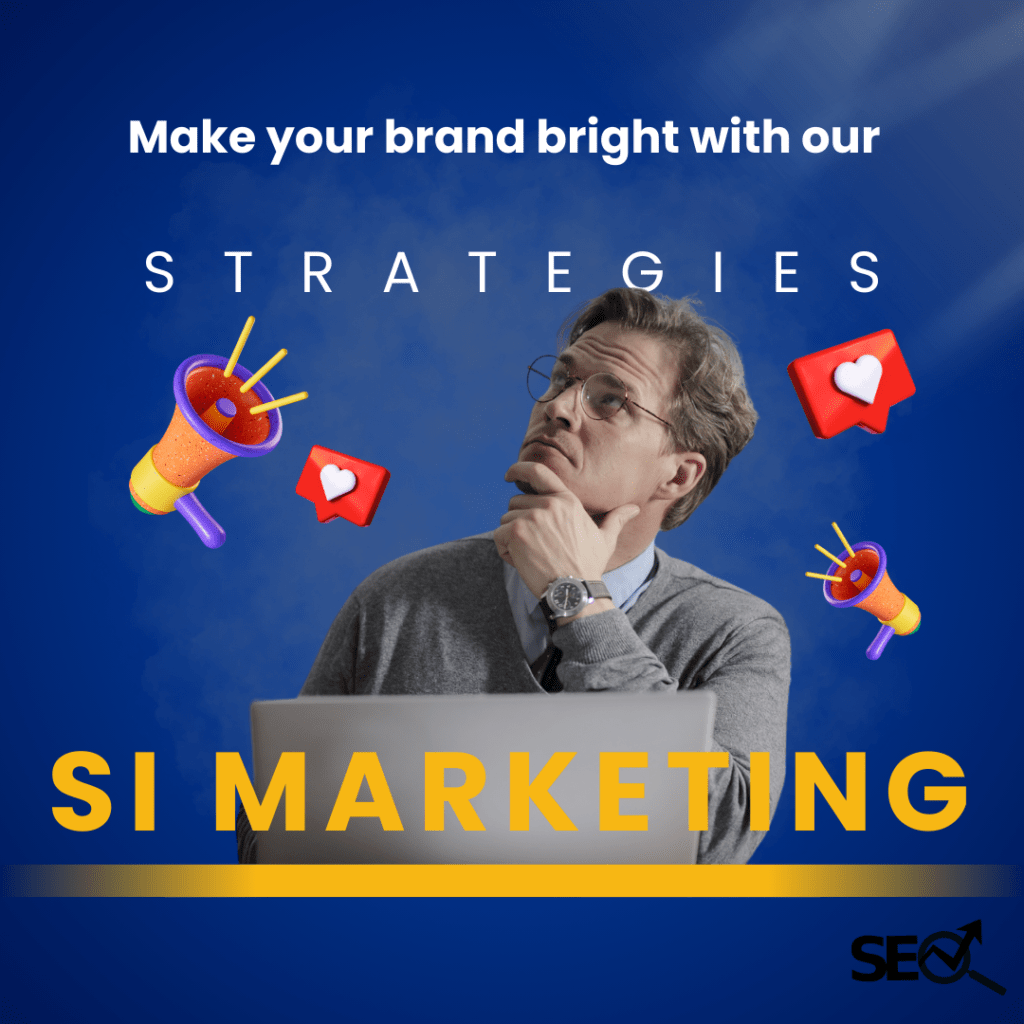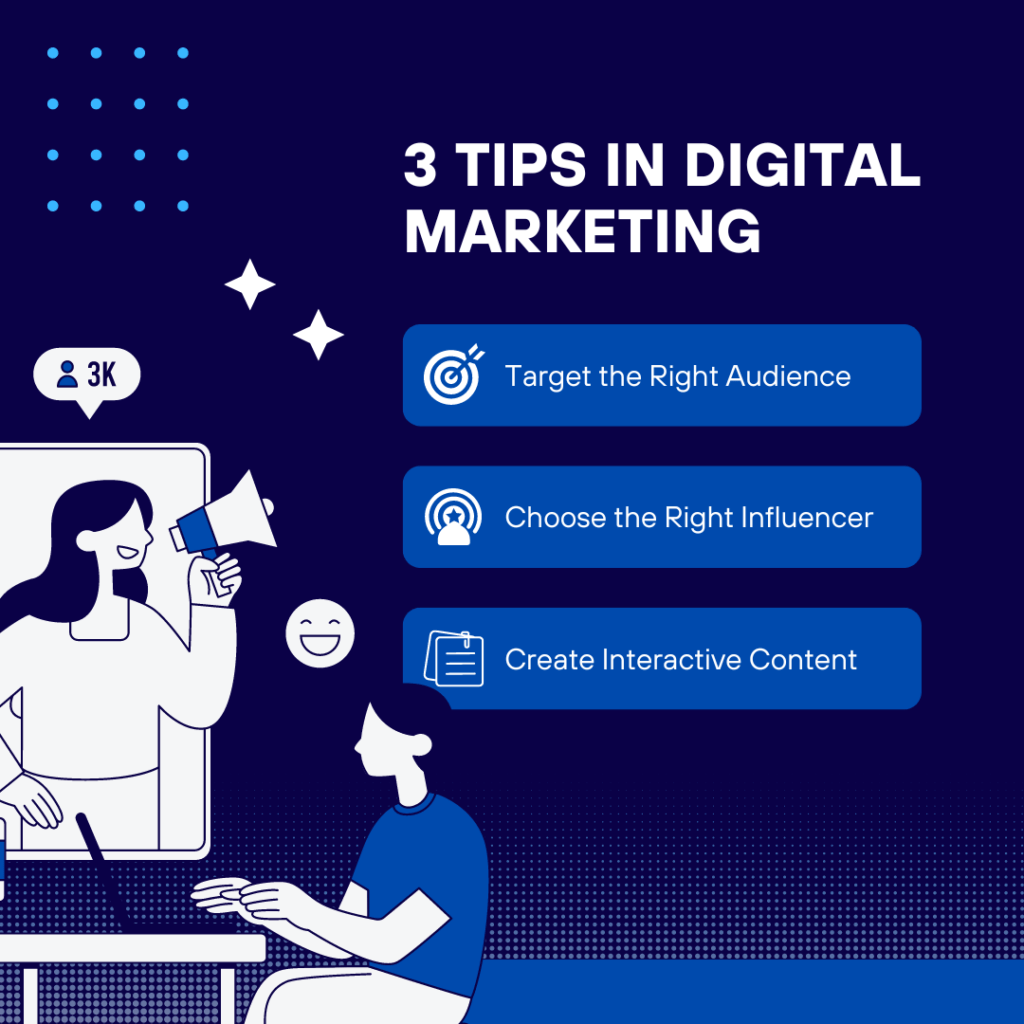Digital marketing tells us to create dissemination content through social media, websites, email, and mobile applications and the optimization of that content using a variety of complications across paid, earned, and owned digital channels, including SEO, SEM, pay-per-click (PPC), advertising, content syndication, email, social, text, and more.
Importance of digital marketing in 2024
Digital marketing complications help marketers define goals, target people, and develop a digital marketing plan that best reaches the audience. These digital marketing complications provide direction for an outcome for a campaign or program for outcomes.
Digital marketing is everything at present and it has almost been involved in every part of business, elementally changing, it is noticed how companies communicate with customers and how much companies prioritize them.
So, if your business cannot impact or execute a digital marketing complication in a growing, global online marketplace, you not be able to compete.

Digital marketing plan
Digital marketing strategy including cross-channel marketing, multichannel marketing, omnichannel marketing, or whatever term you prefer, is all about dealing with your customers and prospects across every digital channel and any device. From the inbox and social networks and across laptops, tablets, and smartphones today consumers fully expect you to be there with them, providing a seamless, integrated experience.
To help you build a successful cross-channel marketing strategy, here are in-depth descriptions of widely used digital marketing channels:
Email marketing
Email marketing is one of the best-known older forms of digital marketing, used by B2B and B2C marketers alike. With email marketing y, ou collect customer data across different customers potential customers preferences and ultimately get permission to add them to your list(s).
Email marketing content can also provide information about your services and products, personalized offers, customer success stories, links to case studies, and technical and business briefs. Value is critical to ensure that email is opened and deleted right away. To increase involvement, contented relevant offers are a special way.
In digital marketing, email marketing is a rt art and part science. There are also ways need to compare between sending emails and not sending too many emails if you want to evolve and appeal your emails and digital assets.
Video Marketing
Video marketing is one of the most strong digital marketing channels available in digital marketing. People love videos. They watch videos for fun and research, and they share videos. In reality, more than two billion people and viewers are active on YouTube monthly. Both B2B buyers and B2C consumers make buying decisions thanks to video.
Video marketing increases digital traffic, also increases conversion rates, and raises brand awareness. Videos included in log content have been a cornerstone of both B2B and B2C content marketing tactics for so many years.
Sharing videos is a key to getting more viewers on your content. That’s why, such as YouTube, and optimize videos on your websites and social media channels, you’ll want to leverage third-party sites. Encourage others to share your videos.
Keep your videos short and to the point. When the attention period is short, then the key is to provide great content in an involving manner.
Social media marketing
In digital marketing, social media marketing is one of the best ways to reach a specific, target audience and connect directly with customers, potential customers, and partners. Which social media platform(s) you use depends on who you want to target. The biggest social media platform all over the world is Facebook. Twitter is still popular with B2B buyers. Instagram and TikTok are also extremely popular with millennial and Gen Z consumers. In the early stage of the purchasing cycle, LinkedIn is the best source to connect to B2B buyers.
Various types of content on every social media platform, but all videos and images are focused on it. So, always keep in mind while creating content, that how you want to spread it on social media, and then adjust your content according to it.
Marketers must continuously adapt digital marketing tactics to make the most of every platform available, different platforms will appear with time. For example, before September 2016, no one knew about TikTok, and now it has more users on it than LinkedIn, Pinterest, Twitter, and Snapchat.
Text messages (SMS and MMS)
Next to email marketing, text messages are the direct source to deal with customers, but like social media, messages must be concise to be effective. The marketing team can be leveraged to short-time services (SMS) that are text-only and multimedia messages (MMS) that can include video gifs.
Content marketing
In digital marketing, content marketing lets you personalize you out of the way to different aspects and customers as you present your messages. The more impressive your content, the more likely it will also hold the majority’s attention. However, your content should be according to your customers’ intent and their interest, it must give some priority to operate involvement and conversions.
Email, copy, landing pages, infographics, eBooks, business briefs, banner ads, videos, text messages, commercials, newsletters, press releases, articles, blogs, and digital podcasts are included in this type of content. Content can (and should) be used across channels, but all of your content must have a proper voice and messages.
SEO or PPC (and SEM)
SEO stands for Search Engine Optimization. A good search engine optimization (SEO) strategy optimizes website content (landing pages, blogs, etc.) so that it appears higher and more often in search results, driving traffic to your content. Good SEO results depend upon keywords and page optimization. Your web content will improve SEO and give us higher results in traffic and conversion by using the most searched keywords and phrases. To improve page rank and attract customers to your content, you must organically link from high-authority third-party pages.
When we click on a specific link pay-per-click (PPC) refers to paying. Search engines and most social media sites offer PPC opportunities. PPC ads will appear in your targeted customer’s and prospective customer’s feeds.
Pay-per-click (PPC) marketing that can be fully stunning that is from search engine marketing (SEM). When showing marketing messages (copy) and a link in the proper place while the audience searching for keywords, it pays a search engine for this.
Website design and marketing
In digital marketing, your website is often the first point of contact with potential customers have with your company and brand. The consistent branding of all digital assets can be promoted by great web design. It should also make your website more search engine friendly, provide a great user experience, and improve the conversion rate (more clicks and sign-ups, etc.)
Display advertising
In marketing, marketers can reach more prospects by displaying relevant ads on third-party sites. Such ads can include banners, sidebar boxes, video ads, and interactive ads that link to one of your websites and landing pages.
Affiliate marketing
Many bloggers and social media influencers are associate marketers, as they use their blogs and social media accounts to optimize various products and services in marketing. It is a performance-based type of marketing. For optimizing various products, join-up marketers earn a commission. When more visitors and customers are introduced by marketers, then they will earn more money.
Advertising
In a few years, many seismic changes occurred in traditional advertising media. Technology has made it possible to deliver more targeted media buys across new TV platforms such as Netflix, Hulu, YouTube, and radio because, despite the growing number of other entertainment sites, people are still listening to the radio and watching TV.
How does digital marketing work?
There are different ways to reach digital marketing campaigns. You have a wide range of tactics in your toolbox, strategies, and channels as a digital marketer that can help you connect with your audience. Generally speaking, a digital marketing campaign involves several steps:
1. Define your digital marketing goals
Digital marketing is a wide-ranging field. So, it’s important to establish your goals before a digital marketing campaign. For example, do you build brand awareness? Acquire new customers? Focus on retention and customer loyalty? Outlining goals helps you to modify your tactics and budget to increase your impact.
2. Identify your audience
Whose attention are you trying to get? The more details that you can find out to get information about your targeted audience (age, location, income, etc.)
3. Identify the correct marketing channels and marketing strategy
Now you need to decide that (for how much) you want to reach them. Digital marketing trying to connect with new customers when you are a B2C. In that instance, you might allocate more of your budget to social media advertising on special platforms rather than put the excess of your efforts (and money) into blog publishing.
4. Develop and promote content and messaging for every channel
Analyze your data and try to find out more about your audience. For example, if you know that your customer prefers browsing on a mobile phone versus on a laptop, the content they receive will need to be optimized to view on a phone but this may not be too much. Across different types of channels, customers irregularly interact with brands. So, every part of the content must have a proper brand voice and messaging. What type of brand and how much value do you provide, consistency prevents confusion about this.
5. Campaign measurement across key metrics
Results are the base which measured across key metrics and recapitulated. How will you know whether the campaign is doing well or continuously improving when you don’t calculate your performance based on key metrics as you defined earlier? Calculating results over time ensures that you’re connecting with customers, driving loyalty, and building brand advocacy.
Cross-channel marketing
Cross-channel marketing or multichannel marketing includes the use of various kinds of channels. Cross-channel marketing goes behind traditional marketing. In this digital world, a marketer has to use multiple channels to keep in touch with what the audience wants. Depending on your target customer base, you might need to use a variety of channels: social media, email, web, text, TV, and radio. The more you have data about your customers’ and prospects’ preferences, positions, and interests, the better you craft a marketing strategy with the right content delivered over the right channels.
Customers like jumping from one channel to another channel and so on. They can easily go from social media to a website to a digital assistant to email in no sphere of time at all.
You always provide a seamless customer journey across all channels and keep in contact with them. Keep in mind that all your channels must align with your voice and messages. A discontinuous customers journey across different channels turns customer unvalued. In your digital cross-channel marketing, put effort into consistency.
Marketing is storytelling. If the details were different, how much critical and confusing it would be? If the tone and voice changed? Your customers will not be able to keep in touch with you. They might not understand the message you are trying to get and won’t stick around when you hear how the story ends.
The customer journey should be a pleasant one. Content needs to be easily read, viewed, and digested, no matter the channel. Websites should be easy to navigate, ads easy to understand and graphics pleasing to the eye in marketing.
Digital conversation with your customers is about digital marketing. You want to leave the best impression possible so the customer keeps in touch with you.

Digital marketing KPIs
Digital marketing KPIs stand for digital marketing keys performance indicators (KPIs) are used to measure marketing campaign performance. Digital marketing can use a variety of KPIs to track results. As you work through any strategy, determining which specific digital marketing KPIs to use makes it easier to determine the targets and goals and to measure campaign performance, including the following data:
. Return visitors to the website. Indicator engagement because indicators are coming back to your website/landing pages to consume more content or take a specific action.
. First visit. Keep in mind how people search your website and how much value they give to it.
. Web traffic source. Show how people are finding your websites/landing pages.
. Total visits. The number of singles looked around periods by that how many individual visits to your site.
. Total unique visits. The number of people who have visited your website/landing pages.
. Click-through rate (CTR). The percentage of people who click on a CTA or a link.
. Average time on page. All users spend their average time on the site.
. Marketing ROI (return on investment)
How much earning of price of running the campaign as compared to the income of the marketing campaign?
There are hundreds of possible KPIs you can use, depending on the type of campaign you run. To learn more, continue reading:
Which type of digital marketing is best?
There is a one-size-fits-all approach but digital marketing only works for every business and all industries. Different companies need to use different tactics to achieve their goals. The best tactics depend upon several factors, such as the marketing team’s size, budget, target audience, and business goals.
Small-to-medium businesses (SMBs) may develop organic SEO strategies, social media strategies, email marketing campaigns, and blogging calendars since these tactics require little to no investment.
To deliver on boarder business goals, large companies usually expand into paid programs. Syndication digital assets, producing webcasts, focusing on account-based marketing (ABM), and investing in paid media or PPC marketing are included in these tactics.
Digital marketing vs. digital media
Digital marketing is a set of tactics and activities, digital marketing refers to a set of forms, formats, and platforms that include:
. Emails
. SMS and MMS
. In-app/push notification
. Social media
. Audio (Spotify, Pandora, Apple Music)
. Digital advertising (banner ads, pop-up ads)
. Video (YouTube, Netflix, Hulu)
To connect with customers digital marketing uses digital media. Put another way, digital marketing is a strategy and digital media is a means.
Digital media vs. Internet marketing
Digital media and internet marketing are approximately the same, although there is a coincide between the two. Digital marketing is assigned to a set of projects and strategies that use various types of media channels.
Internet media requires the internet to connect to the leads and it is a subgroup of digital marketing. All kinds of digital marketing are internet marketing, but not all kinds of internet marketing are digital marketing. For example, TV ads, radio ads, and text messages are not included in Internet marketing but under digital marketing.
Digital marketing vs. inbound marketing
Compared to digital marketing, inbound marketing is one of the cohesive strategies comprised of some digital marketing tactics used to try and bring potential customers to the content that is being offered. Inbound marketing is very metrics-driven, focusing on and then on pushing customers through the sales funnels, ultimately driving marketing qualified leads (MQLs) and conversion.
Benefits of digital marketing
Digital marketing tactics enable direct communication between companies and their customers, as those customers travel along their unique buying journey. Digital marketing helps innovation marketers deliver the right content and offer at the right time, on the channels where customers spend most of their time. With the use of digital marketing KPIs, marketers can understand what strategies work and how well they work, helping to drive continuous improvements, boosting customer engagement, and improving marketing ROI.
Done well, digital marketing benefits both companies and customers. By appropriately personalizing content and offers to each individual, customers feel that your brand understands their needs and can provide them with a valuable service or product. This gradually won their trust and built loyal brand advocacy. There are many advantages of digital marketing companies as well. These include:
. Increased reach. Most people start their purchasing journeys online, across various types of digital channels.
. Agility. It’s commonly not difficult to alter digital marketing strategies if you change your goals.
. Precise targeting. Marketers can reach more qualified buyers by leveraging SEO, and social media strategies. This, in turn, boosts conversions, revenue, and brand advocacy.
. Measurability. Digital marketing provides a great degree of attribution so that marketers know which tactics truly drive growth.
Digital marketing: B2B vs. B2C
The conclusive aim of digital marketing is to bring a customer or buyer towards purchasing. Digital marketing lets both B2B and B2C marketing teams involved with a boarder customer than possible through more traditional marketing strategies. They can also point toward more relevant potential customers, increasing marketing ROI.
B2B digital marketing
B2B digital marketing’s starting aim is to bring high-quality leads to B2B sales terms and confirm higher conversion rates. B2B buying cycles are often lengthy since the products/services are more complex, require and the involvement of more people.
For example, different industries may sell sold same kind of products, and every industry will have various shareholders who are involved with different types of channels. The amount of collaboration needed among lines of businesses is high.
Channels simply used by B2B digital marketing teams are business-focused, like emails, webcasts, LinkedIn and Twitter.
B2C digital marketing
B2C digital marketing’s starting goal is to achieve potential customers and customers to find and involved with your brand by boosting your content visibility. The B2C digital marketing team should consumer-focused channels where B2C buyers are most likely to discover and engage with your brand.

Future of digital marketing
Digital marketing has smashed in a great way and it began with mobile. Consumer behavior has changed with time. The customer expects more from their brand and micro-moments count. What are micro-moments? It involves consumers interacting with the brand at the touch of a button and in real time. This challenge for digital marketing now lies in intersecting people at a micro-moment with relevant marketing messages that add to their lives rather than disrupting them.
Customers know a unique, connected, and seamless experience across all channels and instant gratification. You have only a mini-second to hold their attention and it also includes a strong message and a delightful, engaging experience. If you don’t, they’ll move to the next offer. This has made the old method of marketing obsolete.
Marketers must approve a mobile-first approach with their worldwide audience.
You must keep in mind that consumers:
. Desire to all be treated uniquely.
. Are in charge. They decide where and how they interact with your brand. They want an unbreakable experience and they want to start a smooth conversation on any channel and also with others whatever they choose.
. Wish to be served in the least amount of time possible but with the most convenience.
. The walls between B2B and B2C are breaking down. The delightful experiences people have had with B2C are making them expect the same or more from B2B, but you are always marketing to people, regardless of whether it is B2B or B2C. From now on it is B2ME.
You think that this might be the future, but the future is present. It is occurring in front of everyone. You cannot afford to be left behind. In fact, towards your curve, you got the best.
But what action can a smart, savvy digital marketing take?
. Adopt a data-first mindset you will be allowed to better understand customers and anticipate their time by having more data fluidity and making better use of the data.
. Push automation and intelligence to the max. yoYou’lleed marketing automatic to capture huge amount of data and serve customers in real time.
. It is the right of every customer that you must treat every customer specially, differently, and properly. You need to take the intelligence you drive from mmicro-momentsand stitch them together for a fuller picture of a customer. That’s how a more connected experience is created.
. Embrace omnichannel fluidity. You have to be ready to engage with your customers across any channel and in real-time and keep up with them if they go from channel to channel.
